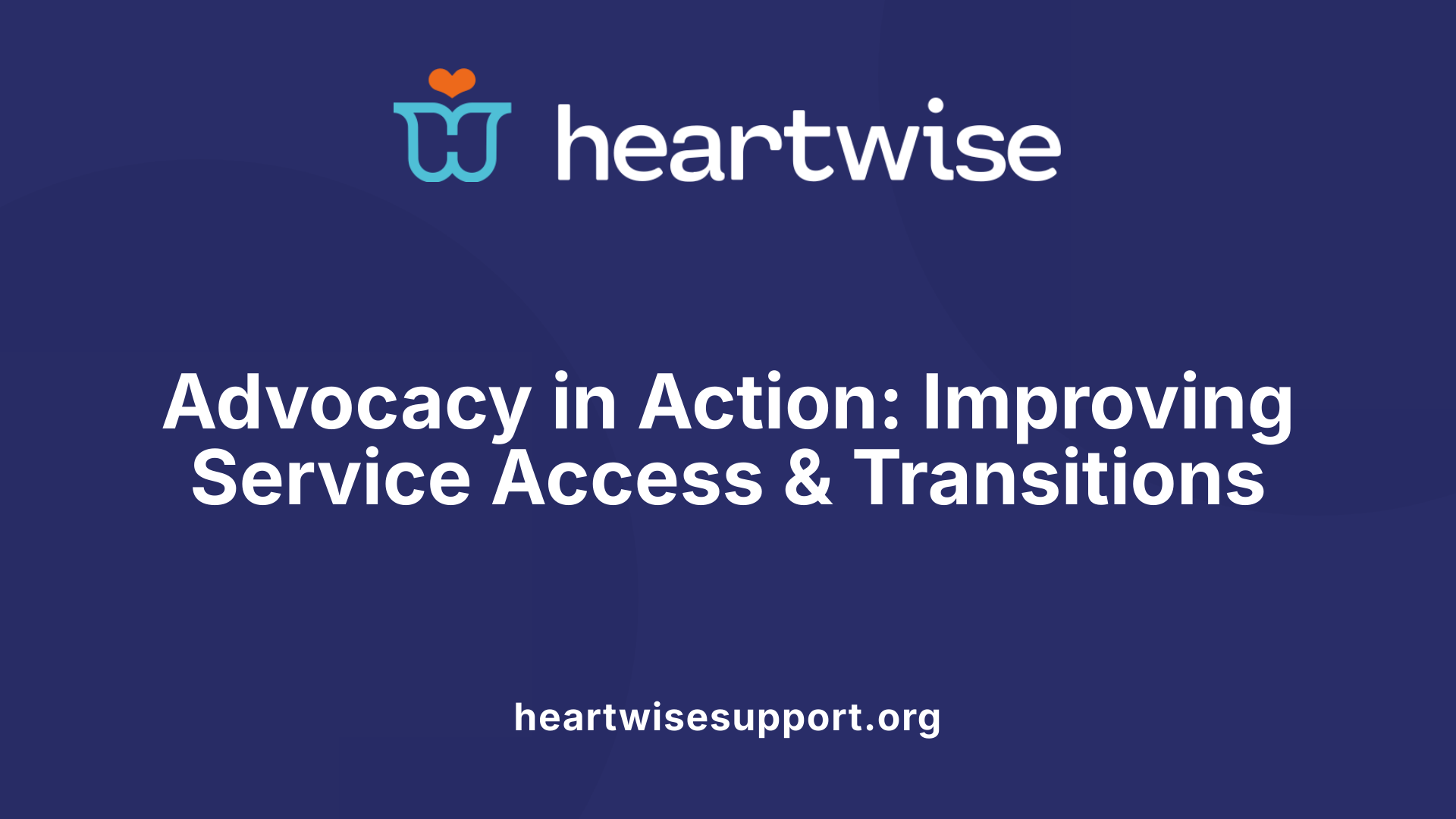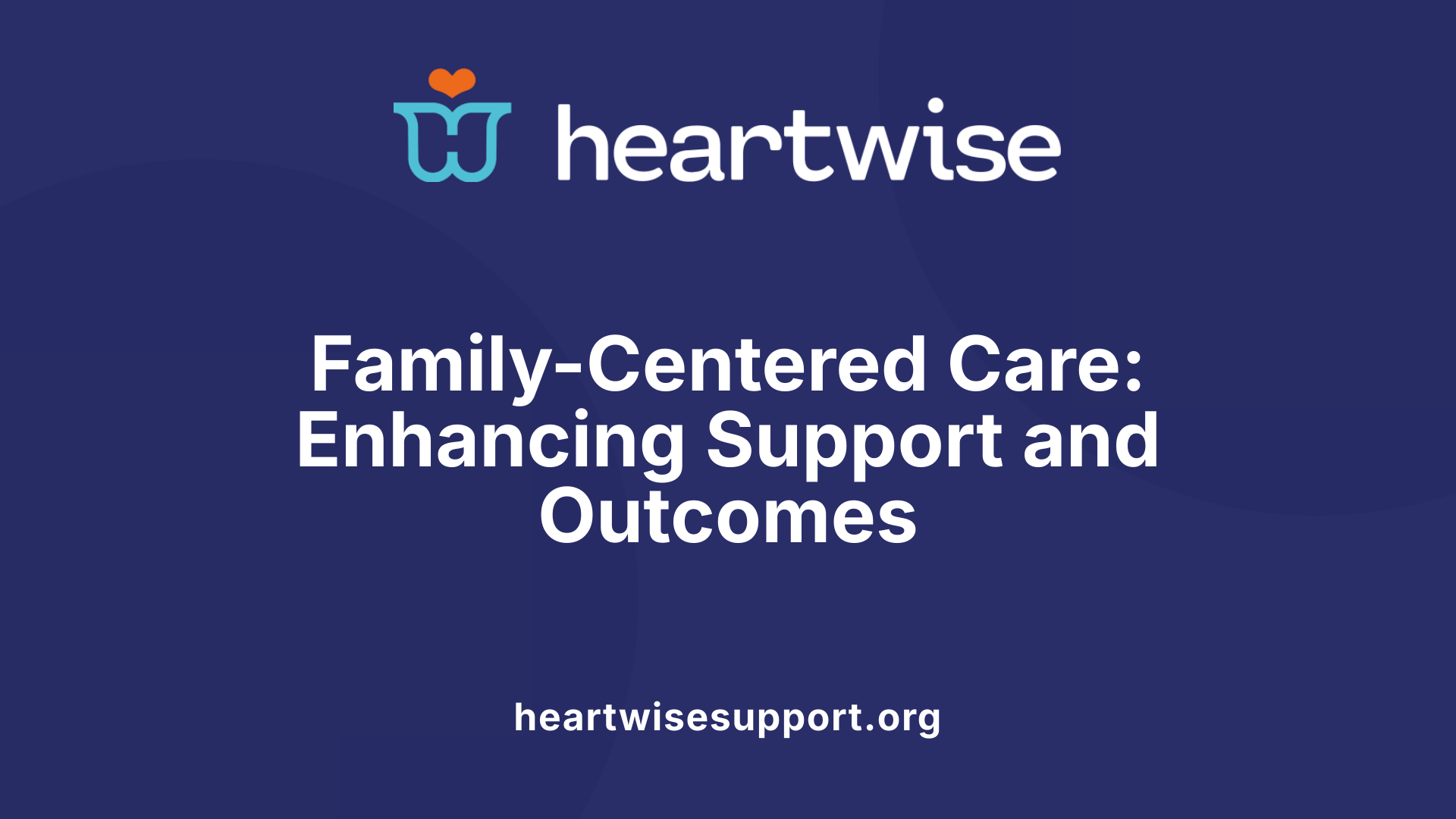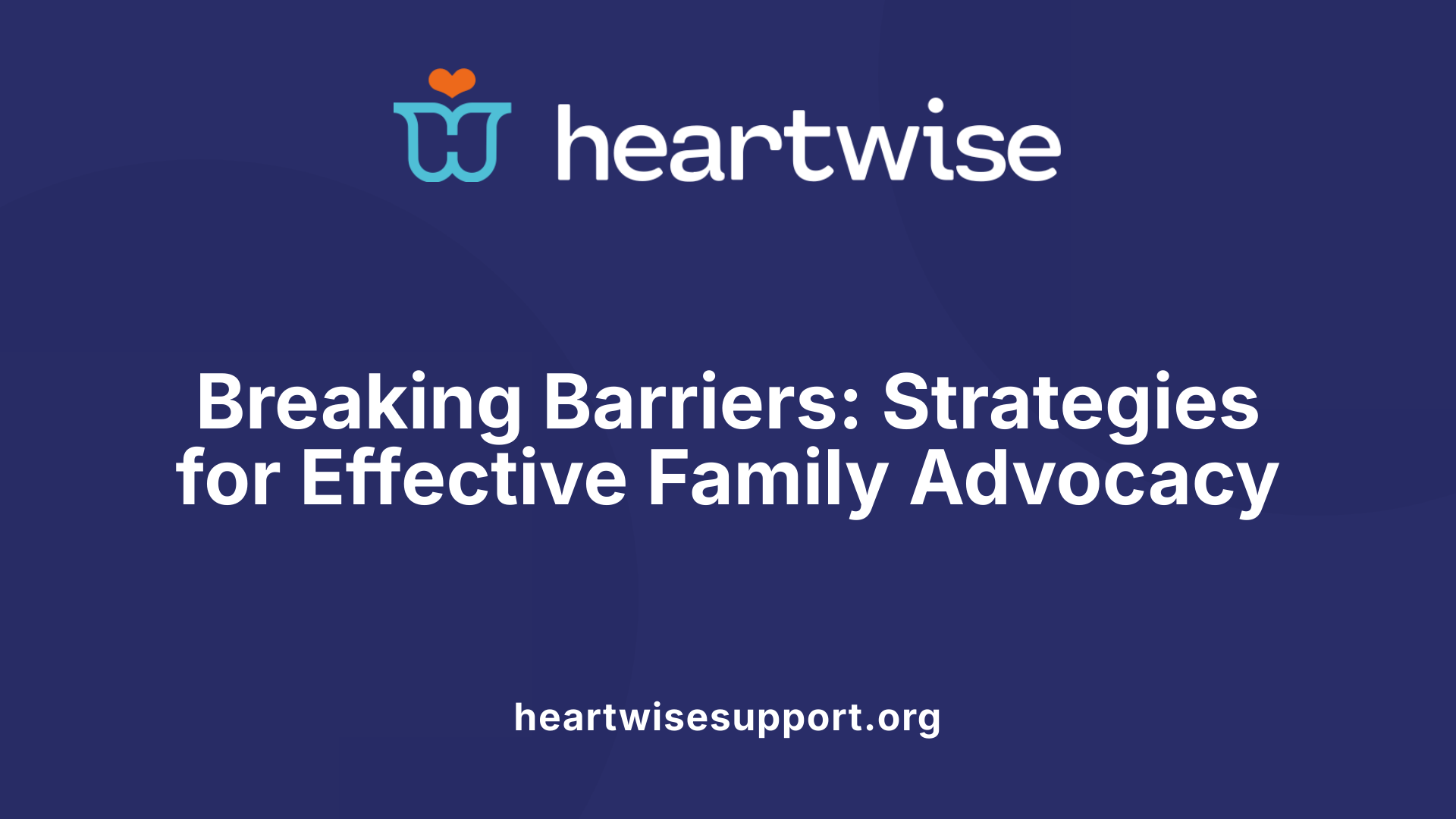Understanding the Crucial Role of Family Education in Autism Advocacy
Family education stands at the heart of effective autism advocacy. When families are equipped with knowledge, skills, and resources, they become powerful agents of change, influencing services, policies, and community attitudes. This article explores how family education enhances advocacy efforts, fosters supportive environments, and ultimately improves outcomes for autistic individuals across their lifespan.
The Impact of Family Advocacy on Service Access and Transition Outcomes

What is the role of family education in autism advocacy?
Family education is essential in autism advocacy because it equips families with the necessary knowledge and skills to navigate complex support systems effectively. When parents understand available services, legal rights, and advocacy strategies, they can better support their children through critical life stages, especially during the transition to adulthood.
Programs like ASSIST highlight that targeted educational interventions boost parental confidence and advocacy skills, resulting in increased access to vital services. These programs often include training in how to communicate with service providers, understand educational policies, and organize necessary documentation.
Family-centered care models emphasize collaboration and mutual respect, involving families as active partners. Such approaches help families feel more empowered, reduce stress, and foster inclusive participation in decision-making.
Engaged, informed families are better equipped to advocate for appropriate therapies, educational accommodations, and community resources. This advocacy not only improves service uptake but also promotes better developmental, social, and emotional outcomes for autistic individuals.
Overall, strengthening family education enhances advocacy efforts, ultimately bridging service gaps and supporting autistic youths in reaching their full potential.
How do parental advocacy activities increase the number of services received by youth with ASD?
Research indicates that parental advocacy activities significantly boost the quantity of services provided to youth with autism. Specifically, such activities account for an additional 10.6% of the variance in service receipt beyond other factors like youth functioning or family demographics.
Parents engage in various advocacy actions, including searching for service agencies, talking with other parents, communicating with providers, attending trainings, and engaging with policymakers. Some actions are more common, but all contribute to securing better support for their children.
Higher parental involvement in these activities correlates with more comprehensive service access, highlighting advocacy as a malleable factor. Because advocacy behavior can be learned and improved, targeted interventions can enhance parental efforts, thereby increasing service levels.
This proactive engagement is particularly important during transition phases when youths move from pediatric to adult services, requiring families to champion their needs consistently.
Can advocacy help address disparities in access to services?
Yes, parental advocacy can be a powerful tool to reduce disparities, especially in underserved communities. Differences in access often stem from systemic barriers, lack of awareness, and resource limitations.
Parents actively involved in advocacy tend to be more successful in navigating these barriers. They seek out resources, educate others, and influence policymakers to expand services.
Helping parents develop effective advocacy skills can bridge gaps in service availability, ensuring more equitable access regardless of socioeconomic or geographic barriers.
Interventions aimed at enhancing advocacy capacity are promising strategies to promote fairness and uphold the right of all autistic youth to receive necessary support.
| Aspect | Details | Additional Notes |
|---|---|---|
| Family Education | Empowers families, improves communication | Programs like ASSIST demonstrate effectiveness |
| Service Access | Advocacy activities increase service receipt | Accounts for 10.6% of variance |
| Addressing Disparities | Advocacy helps bridge access gaps | Especially in underserved communities |
Fostering parental advocacy through education and community engagement remains vital for improving services and outcomes for youth with ASD.
Building Advocacy Skills: From Expression to Action

What are the stages of parental advocacy?
Parental advocacy for children with autism typically unfolds through several important stages. Initially, parents express concerns about their child's development and behavior, which can involve communicating worries to healthcare or educational professionals. The next step involves seeking help—finding appropriate services, assessments, and support systems tailored to their child's needs.
Once assessment is completed, parents often work towards acquiring necessary services such as speech therapy, occupational therapy, or behavioral interventions. Throughout this process, they also engage in raising awareness about autism within their communities to promote understanding and reduce stigma.
This ongoing advocacy journey requires parents to continuously navigate complex systems, communicate effectively with professionals, and ensure their child's needs are prioritized. Every stage demands active involvement, educational efforts, and persistent perseverance.
What challenges do parents face?
Parents advocating for their children with autism encounter several obstacles that can hinder effective support. Time commitments are substantial, with busy schedules managing appointments, therapies, and school activities. Financial difficulties may also arise, especially when dealing with costly therapies and services not fully covered by insurance.
Lack of knowledge about autism, available resources, and the bureaucracy within service systems can make advocacy overwhelming. Systemic barriers, including long wait times and limited access in rural or underserved areas, further complicate efforts.
Additionally, perceived stigma and misunderstandings about autism can discourage families from seeking or sustaining support, making advocacy a challenging but vital endeavor.
How can families be involved in autism advocacy practices?
Families play an essential role in shaping the support and services their children receive. Involved parents share valuable insights about their child's strengths, needs, and culturally relevant goals to guide service planning. They actively implement interventions at home, ensuring skills learned are generalized across different environments.
Maintaining open communication with educators and service providers helps align strategies and promote consistency. Building informal support networks with other parents or community groups provides emotional resilience and shared knowledge.
Raising awareness in the broader community helps combat myths about autism and fosters acceptance. Parents can participate in advocacy campaigns, community events, or policy discussions.
Empowering parents with information about legal rights, Individualized Education Programs (IEPs), and self-advocacy techniques enhances their ability to influence decisions positively. This comprehensive involvement supports better outcomes for children and strengthens family resilience.
Enhancing Outcomes through Family-Centered Care and Support

What are the principles of family-centered care, including their impact on children with autism?
Family-centered care emphasizes key practices such as empowering families, maintaining open and honest communication, and providing individualized support tailored to each family's values and needs. This approach encourages active family involvement in planning, implementing, and evaluating services, fostering a collaborative environment where families feel respected and valued.
Principles like empowering families help them advocate effectively for their children, understand available resources, and make informed decisions. Two-way communication ensures that professionals and families exchange relevant information, which enhances the relevance and effectiveness of interventions. Personalized support respects the uniqueness of each child and family, promoting better engagement and outcome.
Effects of family-centered approaches on communication, social skills, and behaviors
Engaging families in tailored interventions leads to notable improvements in communication, social skills, and adaptive behaviors for children with autism. When families are equipped with knowledge and strategies, they can reinforce learning at home, fostering consistent support that accelerates developmental gains.
Regular collaboration between families and professionals helps identify and address specific challenges, resulting in more targeted interventions. Such consistency across settings boosts children’s confidence, social engagement, and independence.
How does family support reduce stress and increase satisfaction?
Family involvement in autism services reduces feelings of isolation and stress by providing emotional reassurance and practical resources. Support networks, sibling groups, and community resources help parents manage daily challenges more effectively.
Parents who actively participate in decision-making report higher satisfaction with services because their concerns are acknowledged and addressed. Empowered families tend to feel more confident navigating complex healthcare and educational systems, leading to positive experiences and better advocacy outcomes.
Why is support during key life transitions important?
Transitions such as starting school, moving to new educational settings, or entering adulthood can be stressful for autistic individuals and their families. Family-centered care ensures these changes are managed smoothly by providing consistent, tailored support.
Preparation during transition phases involves education, planning, and collaboration among families, educators, and service providers. This coordinated approach maintains stability, promotes independence, and helps individuals with autism adapt to new environments, reducing anxiety and preventing setbacks.
| Aspects of Family-Centered Care | Impact on Autism Support | Supporting Elements |
|---|---|---|
| Principles of Engagement | Boosts trust and collaboration | Empowerment, communication, individualized planning |
| Developmental Gains | Improves communication, social skills, behaviors | Training, feedback, consistent reinforcement |
| Family Well-being | Reduces family stress, enhances satisfaction | Support groups, resources, advocacy training |
| Transition Support | Facilitates smooth life stage changes | Early preparation, comprehensive planning |
Family engagement through principles of family-centered care creates a more supportive environment that fosters positive growth, reduces stress, and prepares individuals with autism for life’s transitions.
The Evolution of Family Advocacy Skills and Lifelong Support Strategies

How do parents actively engage in advocacy for their children with autism?
Parents involved in advocacy activities employ a variety of strategies to support their children with autism. These include searching for appropriate agencies, speaking with other parents, calling service providers, attending relevant training sessions, and engaging with legislators to influence policy changes.
Such activities are often staged—parents express concerns, seek assessments, acquire necessary services, and work to raise awareness within their communities. These ongoing efforts are vital for ensuring that autistic children receive the support they need to thrive.
What is the impact of family-led education and awareness efforts on autism support?
Family-driven educational initiatives significantly influence the landscape of autism support. They promote broader understanding and reduce societal stigma around autism, which in turn fosters a more accepting environment.
These efforts empower families with the knowledge and skills needed to advocate effectively and participate actively in intervention planning. Community awareness campaigns often lead to increased acceptance, better accommodations in educational and social settings, and more inclusive community programs.
Case studies show that when families lead awareness activities, there is a notable improvement in the quality of support and services received. Such initiatives help create a supportive network for autistic individuals throughout their lifespan.
How does advocacy evolve as the child's needs change?
Advocacy is a dynamic, ongoing process that adapts to the child’s developmental stages and changing needs. Parents often start by seeking early intervention, then expand their efforts to include school-based services, transition planning for adulthood, and long-term community support.
Active parental involvement includes educating others about ASD, fostering self-determination, and advocating for appropriate accommodations. As children grow, families sometimes shift focus to promoting independence and ensuring continuous access to services.
This evolving approach ensures consistent support tailored to the child’s current circumstances, helping foster independence and maximizing development.
Why is creating safe spaces and sharing knowledge important?
Creating safe spaces where parents and autistic individuals can share their experiences and knowledge is foundational to effective advocacy. These environments encourage open dialogue about challenges, needs, and successes, reinforcing a sense of community and mutual understanding.
Sharing practical knowledge—such as navigating educational systems, accessing healthcare, or managing social situations—empowers families and increases their confidence in advocacy roles. It also enables collective action, which can influence policy changes and resource allocation at broader levels.
Organizing support groups, parenting classes, and community workshops are some ways to foster this exchange, ultimately leading to more inclusive attitudes and better services for individuals with autism.
Family Education as a Catalyst for Policy Change and Community Support Networks
How does family education influence advocacy policies and support networks?
Family education plays a vital role in shaping advocacy efforts and strengthening community support systems for youth with autism spectrum disorder (ASD). When families are equipped with comprehensive knowledge about ASD, treatment options, and rights, they become more confident and proactive in engaging with service providers, educational institutions, and policymakers.
Educated caregivers can identify gaps in services and advocate effectively for their children, which often leads to tangible policy changes. Their experiential insights, gained from firsthand experience navigating complex systems, are invaluable in influencing the development of more accessible and inclusive policies.
Amidst these efforts, professionals such as educators, healthcare providers, and policymakers recognize the expertise of families and value their input. This collaboration fosters stronger partnerships and builds community support networks that resonate with real family needs.
Advocacy-led by empowered families tends to increase awareness, reduce stigma, and promote the allocation of resources for vital services like early intervention, therapies, and transition supports. Over time, collective family advocacy fosters a culture of inclusion and understanding, shaping policies that address disparities and ensure equitable access to support systems.
In summary, family education not only enhances individual advocacy but also acts as a catalyst for broad policy reforms and community-driven initiatives, ultimately leading to improved outcomes and more supportive environments for autistic individuals and their families.
Overcoming Barriers: Strategies for Effective Family Advocacy

What are the common barriers faced by parents advocating for their children with ASD?
Parents often encounter several challenges when advocating for their children. These include significant time commitments due to busy schedules and caregiving duties, financial difficulties that limit access to services, and a lack of knowledge about available resources and systems. Additionally, navigating complex bureaucratic processes within healthcare and education systems can be overwhelming.
Some parents also face societal barriers such as stigma and misconceptions about autism, which can discourage or hinder effective advocacy efforts.
How do system bureaucracy and stigma impact parental advocacy?
Systemic bureaucracy often creates hurdles in accessing timely and appropriate services. Parents may need to fill out extensive paperwork, attend multiple meetings, and face delays that hinder their child's progress.
Stigma surrounding autism can lead to social isolation, reduce community support, and diminish opportunities for inclusive education and services. This societal bias can affect both how parents are perceived and how autistic children are treated, further complicating advocacy efforts.
What solutions can help overcome these barriers?
To address these issues, leveraging technology has become increasingly important. Online resources, digital communication with service providers, and advocacy platforms can streamline access and reduce time burdens.
Engaging in advocacy training allows parents to better understand systems, learn negotiation skills, and confidently communicate their child's needs. Cultural sensitivity in service delivery ensures that diverse family backgrounds are respected and meet specific needs.
Community organizations and support groups also play a vital role in providing emotional support, sharing information, and fostering networks for collective advocacy.
By employing these strategies—using technology, enhancing advocacy skills, and promoting cultural understanding—parents can more effectively overcome barriers. This empowers them to secure vital services for their children and contribute to reducing disparities in autism support services.
The Future of Family Education in Autism Support: Trends and Opportunities
Emerging trends in family education
As awareness of autism increases, more structured programs are emerging to empower families with knowledge and skills. These trends focus on providing accessible resources that help parents navigate complex systems like education, healthcare, and social services. There's also a growing emphasis on tailored support that respects the unique circumstances of each family, promoting personalized strategies.
Innovative approaches using technology and community engagement
Technology plays a vital role in expanding access to autism advocacy education. Online platforms, webinars, and mobile apps offer flexible learning opportunities for parents regardless of location or schedule. Community engagement initiatives, such as local support groups and family events, foster peer learning and shared experiences, strengthening advocacy efforts.
Potential for scaling advocacy education to diverse communities
Efforts are underway to adapt advocacy training for diverse populations, including culturally and linguistically different communities. By developing multilingual resources and culturally sensitive programs, organizations aim to bridge disparities and ensure all families can effectively advocate for their children. Scaling these initiatives could significantly improve service access and outcomes across varied demographics.
| Trend | Description | Impact |
|---|---|---|
| Increased digital resources | Use of online courses, apps, and webinars to reach more families | Greater accessibility and convenience |
| Community-based programs | Local family support groups and culturally tailored initiatives | Enhanced peer support and culturally competent care |
| Personalized family support | Customization based on family needs and cultural background | Improved engagement and empowerment |
Looking toward the future, expanding family education through innovative strategies promises to address existing disparities. By leveraging technology and fostering community involvement, more families will be equipped to advocate effectively for their children with autism, fostering better outcomes and social inclusion.
A Collective Path Forward
Empowered families are the cornerstone of effective autism advocacy. Through education, support, and active engagement, families can influence services, policies, and societal perceptions. As the landscape of autism support continues to evolve, fostering family-led initiatives and education will be vital for building inclusive communities and ensuring that autistic individuals receive the resources and respect they deserve.
References
- Short Report: The Role of Parental Advocacy in Addressing Service ...
- Parents' Experiences in Advocating for Children and Youth ...
- The Importance of Family-Centered Care: Enhancing Autism ...
- [PDF] The Role of Parent Advocacy in Autistic Youths' Self-Determination
- What Is the Role of a Parent Advocate?
- Education researchers examine nuances of parental advocacy in ...
- Family Support for Autism Spectrum Disorder
- Support for family members | Autism Speaks
- The Real Priorities in Advocacy - Keeping the Whole Child, the ...











